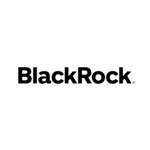Technology trends in financial services
Blockchain, data analytics and mobile payments are among the technologies having the greatest impact on financial services, panelists in yesterday’s technology trends session agreed. In terms of development, as Commerzbank chief information officer Stephan Mueller described it, mobile and data analytics are “already there”, while blockchain is still in the beginning.
As the bank looks at how best to use blockchain, Mueller said, it has decided that it is better to collaborate rather than to go it alone and to look at opportunities for interoperability. And while the use case is important, there also has to be a business case for it to move forward.
Where value will come from, IBM lead cloud advisor Rashik Parmar observed, is using blockchain to reduce inefficiencies and optimise processes in order to create new value – something that will require banks to reimagine their role. Another part of the solution, he added, is the open ledger, which can create a new level of transparency. UOB Bank managing director, Susan Hwee, added that she looks at trade finance, where documents have to move, as a big opportunity.
A major advantage of blockchain is that it can enable faster payments at a time when what Hwee calls “instant generation” customers are asking why it takes so long to move money.
In the plenary session on Monday, Gottfried Leibbrandt, chief executive of Swift, spoke of the potential of distributed ledger technology, DLT, (”it is not a sandwich”), particularly if banks were to use it in a private setting for the transfer of assets. “I would like to think that SWIFT is well placed to host such blockchain communities,” he said.
Leibbrandt, however, sat on the fence as to whether blockchain woud become mainstream and pointed to other technologies that showed promise, but failed to have mass adoption.
In terms of data analytics, panelists agreed that there are tremendous opportunities to make better offers to the customer. As an example, Mueller said whereas about 2 per cent of customers sign up for most offers, more than 25 per cent signed up when the bank used analytics to offer an investment in solar energy to people who had bought solar panels. “We don’t have to spend a fortune on marketing campaigns and you don’t bother the customer with offers he doesn’t like.”
Parmar added that the key is to find what matters for the individual and the language they will respond to, then translate it into value for the bank that doesn’t break the ethics of the individual. “Regulation and ethics are big questions,” Parmar said.
Hwee said one of the key challenges she faces is finding people with the skills to mine the data. While the bank does well in using data in a traditional way, adding value to customers’ lifestyles is harder. “We need to hire a lot more non-banking people to think outside the box.”
What quickly became clear when the discussion turned to mobile payments is that practices differ widely. Whereas Mueller said highly sophisticated payment schemes that already exist in Germany make mobile payments less important, Hwee sees them as very important in Singapore and said the bank is focusing on how to get the whole value chain.
The key, Parmar observed, is to get the customer’s attention and offer something that inspires them, motivates them and is tied to their human needs to create a “magical experience”. And from a technology perspective, Mueller explained, banks need to bring the Web designer and mainframe together, Java with Cobol – that’s a challenge.










































